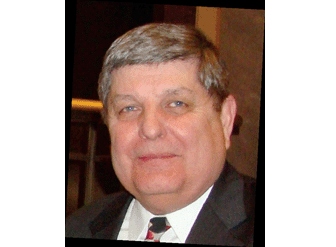 |
| Frank Hurd |
|
By Frank Hurd
COO, Carpet and Rug InstituteBack in February, California assemblyman (now speaker) John Perez introduced carpet stewardship legislation AB 2398. While created with the utmost of good intentions, the original bill needed modification to create a winning scenario for everyone: consumer, industry and government.
Six revisions later, the California Legislature passed a version of AB 2398 that achieved widespread support. The bill was signed into law Sept. 30 by Gov. Arnold Schwarzenegger.
The process that resulted in the final bill is a superb example of a public/private partnership to find solutions to a vexing problem; in this case carpet going to the landfill. But this concept of working together to find solutions that work for everyone is not unique for the carpet industry. In 2002, for example, the Carpet America Recovery Effort (
CARE) was formed to find market-based solutions to divert postconsumer carpet from America’s landfills.
AB 2398 is a natural extension of CARE’s mission. It combines a voluntary, market-based approach to landfill diversion and recycling of post-consumer carpet. But unlike other extended producer responsibility legislation for things such as rechargeable batteries and electronic or mercury switches, this legislation does not try to fund the cost of recycling and diversion. Instead, it is designed to incentivize the growth of existing programs.
LEGISLATION OBJECTIVESThe objectives of this legislation are to entice, motivate and encourage the recycling of post-consumer carpet, the diversion of post- consumer carpet from landfills, the recyclability of carpet and, most importantly, the market growth of secondary products made from post-consumer carpet.
The Modesto Bee noted in a Sept. 12 article AB 2398 could annually divert 1.3 million tons of waste in the form of old carpet from California’s landfills, which represents approximately 3% of what consumers dump into them each year. These goals will be accomplished by involving carpet manufacturers, wholesalers, dealers, recyclers and processors of post-consumer carpet, with the California Department of Resources, Recycling and Recovery (CalRecycle) providing oversight of the program.
CARE has been designated as the industry stewardship organization charged with implementation of the legislation’s goals. There is a provision in the bill allowing individual manufacturers to deal directly with CalRecycle if they so desire.
The bill provides for a 5-cent stewardship fee on every square yard of carpet sold in the state of California. This fee, estimated to generate around $5 million per year, is required by law to be visible and is an after-tax item on all invoices for carpet sold in California, regardless of whether the product was produced in California or shipped in from outside the state.
This fee must be used to incentivize the growth of the recycling and diversion of post-consumer carpet discarded in California. It is the industry’s responsibility to determine how to best utilize the money in order to grow recycling and diversion programs. The industry will do this by demonstrating to CalRecycle that it is using the funds effectively.
This means the industry will be included in a Stewardship Plan submitted by CARE and approved by CalRecycle with annual reports to the department on what it has accomplished. The Stewardship Plan will also include any recommendations by the industry to adjust the stewardship fee to better accomplish the intent of the legislation.
TIMELINEThe fee will actually start 90 days before the Stewardship Plan is submitted and 210 days before the plan is required to be approved. (In order to be in compliance, the Stewardship Plan must be approved by March 31, 2012.) This will allow the industry to start early to find the best ways to implement the program and provide a vehicle to start incentivizing growth while administrative issues are being addressed.
CARE, whose mission is to find market-based solutions for the diversion of post-consumer carpet from America‘s landfills, will be working with carpet industry senior executives to articulate early in the process with regard to receiving incentive funding. It must also show how best to manage the funds, identify a third party to ensure compliance with the legislation and, finally, put in place adequate fraud protection controls.
While completing all this will be a daunting task, CARE is up to the challenge. Since its inception, CARE has grown its network of collectors and processors from five to 78 across the U.S. It has also diverted more than 1.6 billion pounds of carpet from America’s landfills. This legislation will be the next significant step in growing that number.
While California is the first state to enact such legislation, it will not be the only one. Other states have been closely watching and monitoring AB 2398’s progress. Now they will be examining how it is implemented.
For more information on AB 2398, visit carpetrecovery.org.